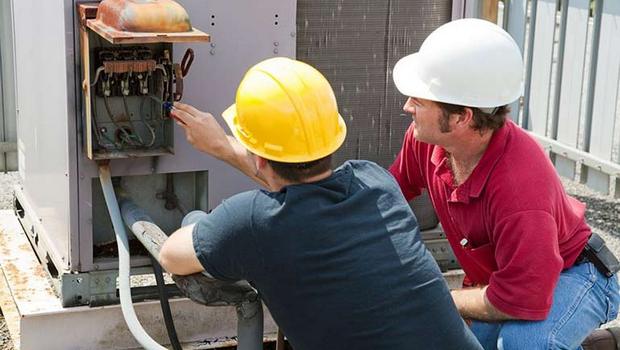Toshiba rolls out R32 training programme

Toshiba has joined forces with industry training organisations Business Edge and the Practical Refrigeration Training Centre, to roll out its flammable refrigerant training programme.
The training for installers is designed to ensure safe handling of R32 and other flammable refrigerants during installation, servicing and ongoing operation.
The announcement follows its decision last year to switch to R32 in split and multi-split air conditioning systems. Toshiba’s air-to-water heat pumps will switch mid-2019.
Neil Hitching, sales director of Toshiba Air Conditioning, said: “Our priority is to ensure the highest standards of safety for all Toshiba installations and the flammable refrigerant training programme will help to ensure a successful and safe transition to this new class of refrigerants.”
R32 is classed as an A2L refrigerant and is lower in flammability than A2 and A3 refrigerants, such as propane. However, under UK health and safety law and transport regulations, R32 is still considered flammable and the distinction between A2L and A2/A3 refrigerants is not recognised. For this reason, and because flammable refrigerants of all classes are likely to become more widely used in future, the Toshiba training programme covers safe handling of all flammable refrigerants, and equips installers to handle both A2L and A2/A3 refrigerants.
Toshiba is offering customers a contribution towards the cost of the course, which is also available through its Rewards scheme, effectively making it available free to those enrolled on the scheme with sufficient points.
The courses will be offered in the south of England at Waterlooville and Tiverton, in the midlands at Milton Keynes, and in the North at Burnley. The course is approved and validated by City & Guilds and Logic Certification.
The one-day programme covers safe handling of all A2L, A2 & A3 flammable refrigerants, and includes: the dangers of working with hydrocarbons, including H&S requirements and identification of hazards; regulations, codes of practice and industry recommendations for installation, servicing and maintaining and de-commissioning hydrocarbon systems; properties of hydrocarbon refrigerants, their advantages and disadvantages and typical applications; understanding the differences between halocarbon and hydrocarbon RAC systems, including identification of components and system features unique to hydrocarbon systems; how to plan and prepare for work on hydrocarbon RAC systems – risk assessments, appropriate tools and PPE, and establishment and maintenance of a safe area; servicing and maintaining hydrocarbon RAC systems; plus correct tools, leak testing, retro-fitting suitability, and safe charging, recovery, brazing, transportation and storage.
More details and registration here.
